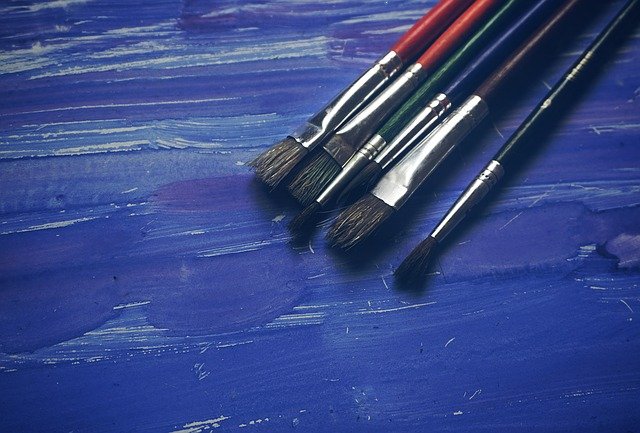Expressive Arts Therapy
Feeling disconnected from yourself?
Longing for a way to bring creativity, playfulness, and meaning back into your life?
Noticing that you’re stuck in your head way more than you’d like to be?
Wanting to learn new ways to express yourself and understand your inner world?
Feeling like you’re at a crossroads in life and need a fresh way to gain insight into your next move?
It’s very understandable and quite common to feel these things. This is especially true in today’s fast-paced, logic-driven, productivity-oriented world.
Between long workdays, the incessant distraction of technology, and a multitude of commitments, it can feel difficult to switch gears into being more creative and playful. Yet when we don’t take the time to engage our creativity—and we are all innately creative—we lose access to a vital source of well-being and growth.
“In many shamanic societies, if you came to a medicine person complaining of being disheartened, dispirited, or depressed, they would ask one of four questions. When did you stop dancing? When did you stop singing? When did you stop being enchanted by stories? When did you stop finding comfort in the sweet territory of silence?”
—ANGELES ARRIEN
Expressive arts therapy can help you replenish, reconnect, and reclaim
Feelings of longing and emptiness can be extremely uncomfortable. However, they can also be calls to action. These signifiers of “divine discontent” can often be important messages that it’s time to:
Replenish your body, mind, and spirit
Reconnect with your inner self
Reclaim your creative self-expression
Expressive arts therapy is a way to answer those calls and do just that.
Art therapy for mental health
Working with a trauma-informed expressive arts therapist is a powerful route to growth and healing. Art therapists work with people of all ages and walks of life who are coping with issues such as:
Burnout
Stress
Anxiety
Depression
Trauma
Creative blocks
Life transitions
Grief and loss
Relationship struggles
“The gift of an image is that it provides a place to watch your soul.”
― JAMES HILLMAN
So what is expressive arts therapy, exactly?
Person-centered expressive arts therapy includes everything from visual arts (i.e., drawing, collage, painting, photography) to writing, poetry, music, movement, storytelling, sand tray, and drama.
All of these mediums can serve as potent tools to help you reconnect to your deepest self, as art therapy gets to the heart of the matter. Put another way, entering the world of images, sounds, and stories can bring about a deep level of insight as the wisdom beyond the rational intellect is accessed.
One reason for this is that the psyche (and soul) speak in images. Therefore, if you feel like you’ve been living in your head for too long and need to reconnect to your body, mind, and spirit, art therapy provides a direct line to these critical aspects of yourself.
Further, many people find that engaging in creative therapies can help to significantly decrease stress, anxiety, depression, and the effects of trauma. This is because expressive arts therapy serves to create containers to express and process emotions that may feel big, unwieldy, or beyond words. In addition, expressive arts therapy can help to increase access to emotional centeredness and creative problem-solving abilities.
You might feel intrigued but still have some nagging questions or doubts…
-
Some people wonder if they have to be a professional artist, or “good” at art, in order to participate in expressive arts therapy. However, you don’t have to identify as an artist or even as “creative” or “artistic” to reap the many benefits of art-based therapy.
The fact is, the creative arts are for everybody. They are tools for self-expression, which is our birthright. I see art therapy as one way to reclaim that birthright.
The art that is created in therapy is intended for you and your art therapist to explore—it does not have to be shared with anyone outside therapy or hang on a gallery wall (unless that’s what you desire!). Moreover, art that is separate from commerce and used as a tool primarily for personal growth is plenty worthy all unto itself.
-
As an expressive arts therapist, I’m here to witness, guide, and facilitate what unfolds—not judge, critique, or analyze. The expressive arts are presented or suggested as optional tools. They are never forced or mandatory. Particularly if you’re coming from a formal arts background, I fully support you in breaking art school rules, being messy, and experimenting with unfamiliar artistic mediums in expressive arts therapy!
-
Yes, art therapy can be done online, and quite effectively, too! I provide clients with a shortlist of easy-to-find art supplies to have handy for sessions. Further, I work with clients collaboratively, proposing ideas for different creative therapy projects depending on what’s coming up in session and what the client is interested in. Also, if a client is game, I offer art prompts to engage with between sessions to keep the creative thread going.
-
The expressive arts are a potent antidote for fatigue, pain, stress, and trauma.¹,² Further, art therapy can enhance mental functioning and help to create a greater sense of well-being.²
Plus, many people find that engaging in creative arts therapy can be calming and centering. Click here to read an interview I did with an expressive arts therapist to learn more about the benefits of doing expressive arts therapy.
“The greatest opportunities for creative transformation are often lodged in our discontents. Art is an alchemical process that feeds on emotional energy….So rather than try to rid your life of tension, consider doing something more creative with it.”
― SHAWN MCNIFF
Come home to yourself through creative therapy
If you’ve been hearing the call to come home to yourself and replenish, art therapy is a wonderful way to honor that call. I introduce the creative arts in therapy in a gentle, invitational manner. For example, we might use others’ art—images and words cut out from magazines, published poetry, symbol cards, or music—as a jumping-off point to start. After then, there is an abundance of creative ways to explore your inner world at the pace that works best for you.
Answering the call
Feeling ready to answer the call to reconnect to yourself and your creative self-expression? If so, click below to schedule a complimentary 20-minute intro call where we can see if it would be a good fit to work together.
References
1. Family & Youth Services Bureau. National Clearinghouse on Families & Youth. Calm through creativity: how arts can aid trauma recovery. https://www.cathymalchiodi.com/resources/expressive-art-therapy-articles-links/. Accessed May 1, 2022.
2. Malchiodi CA. Introduction to art therapy in healthcare settings. In: Malchiodi CA, ed. Art Therapy and Health Care. New York, NY: Guilford Publications; 2013.





